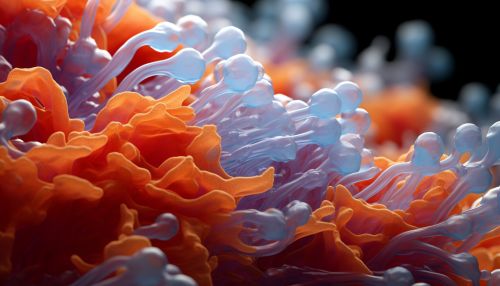ATPase
Introduction
ATPases are a class of enzymes that catalyze the decomposition of ATP into ADP and a free phosphate ion. This process releases energy, which the enzyme harnesses to drive other chemical reactions that would not otherwise occur. This function is critical for cellular processes and the maintenance of life.
Classification
ATPases are categorized based on their structure and function. The main classes include:
- F-ATPases (F1F0-ATPases in bacteria, mitochondria, chloroplasts)
- V-ATPases (found in eukaryotes and bacteria)
- P-ATPases (found in bacteria, fungi, plants, and animals)
- E-ATPases
- A-ATPases (archaea)


Structure
The structure of ATPases varies between different types. However, all ATPases have a common characteristic: they contain a catalytic core where the ATP hydrolysis takes place. This core is usually a highly conserved region, indicating its crucial role in the enzyme's function.
Function
ATPases play a critical role in a variety of biological processes. They are involved in many forms of energy transfer within the cell, including the synthesis of ATP, the transport of ions across cell membranes, and the regulation of cellular volume.
Role in Disease
Abnormalities in ATPase function can lead to a variety of diseases. For example, mutations in the genes encoding ATPases have been linked to neurodegenerative diseases like Parkinson's and Alzheimer's, as well as heart disease and cancer.
Research and Future Directions
Research into ATPases continues to be a vibrant field of study. Understanding the precise mechanisms of ATPase function and regulation may lead to the development of new therapeutic strategies for diseases associated with ATPase dysfunction.
